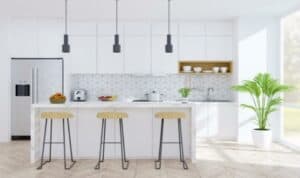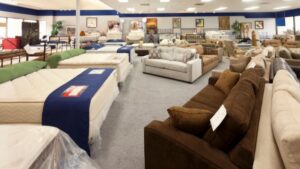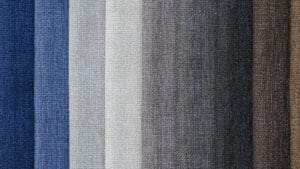Antique cabinets are the silent guardians of our past, each one a masterpiece of form and function that whispers tales of the eras they’ve witnessed. From the grand armoires that held the silken robes of aristocracy to the humble kitchen cupboards that safeguarded a family’s daily bread, these pieces are more than furniture—they are time capsules. To explore the ten classic types of antique cabinets is to unlock a treasure chest of design evolution, each with its own unique story waiting to be discovered and displayed in your home.
Secretary Cabinet
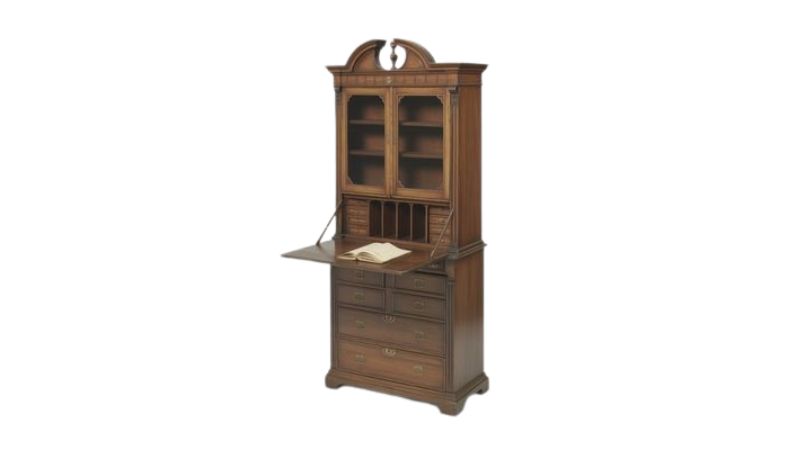
- Simple definition: A tall cabinet with a hinged drop-front that becomes a writing surface and reveals pigeonholes/drawers inside.
- Characteristics: Often combines bookcase or cupboards above and drawers below; ornate examples have inlay, veneering, or carved pediments.
- Typical era/region: Popular in the 18th–19th century England and America.
- Use: Writing, document storage, small-item organization.
- Historical Story: In the 18th century, a secretary desk was more than furniture; it was the command center for a gentleman’s affairs. Thomas Jefferson drafted early versions of the Declaration of Independence on a lap desk, but his estate, Monticello, was filled with writing cabinets where he managed his vast correspondence and stored his architectural plans. The intricate pigeonholes and locked drawers were designed to safeguard sensitive political letters and financial records, making it the most private piece of furniture in the home.
Armoire
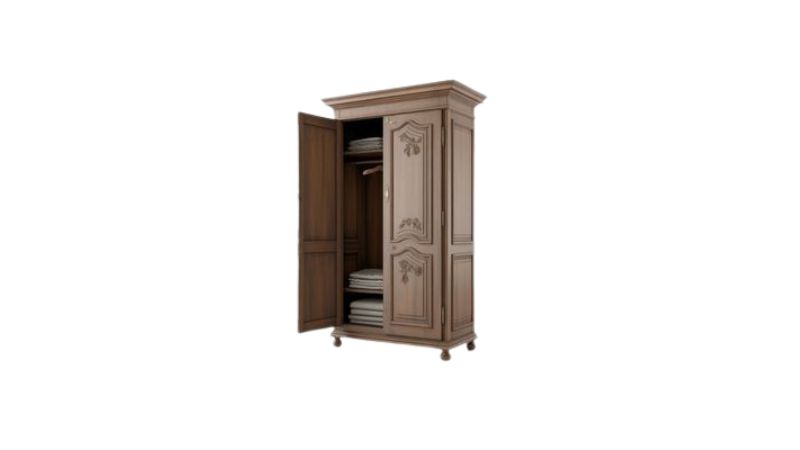
- Simple definition: A large, freestanding wardrobe-style cabinet with one or two doors.
- Characteristics: Deep interior with hanging space, shelves, sometimes drawers; heavy molded cornices and carved panels are common.
- Typical era/region: French and European pieces from the 17th–19th centuries.
- Use: Clothing, linens, general storage.
- Historical Story: The name “armoire” derives from the French word armoire à glace, meaning “cupboard for arms.” Its earliest iterations in Medieval France were not for clothing, but for storing armor and weaponry. These massive, iron-hardened cabinets protected a knight’s most valuable assets. As warfare evolved and fine clothing became a status symbol, the armoire’s purpose transformed. By the 17th century, it was the centerpiece of a wealthy household’s bedchamber, safeguarding elaborate silk gowns and embroidered waistcoats from dust, light, and pests.
Sideboard
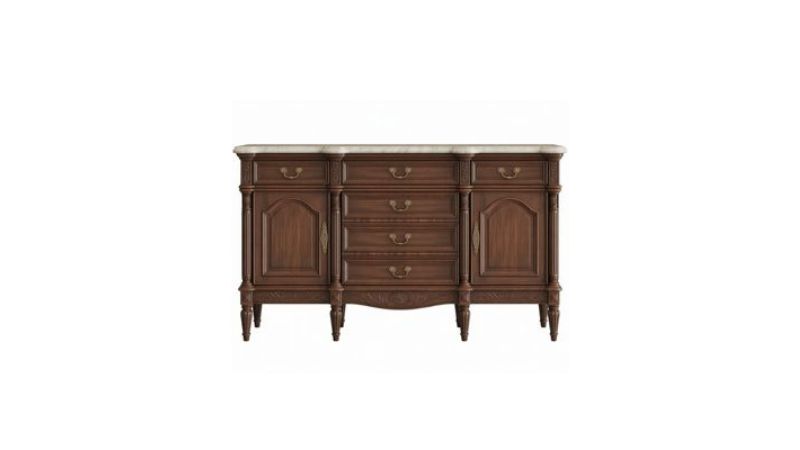
- Simple definition: A low, long cabinet used in dining rooms for holding dishes, silver, and linens.
- Characteristics: Drawers over cabinets, sometimes with a raised back (credenza) or mirrored gallery; made in oak, walnut, mahogany.
- Typical era/region: 18th–19th century Europe and America, Victorian and Edwardian periods.
- Use: Serving surface and dining storage.
- Historical Story: The sideboard reached its zenith in Georgian England, where the ritual of the dinner party was a theatrical display of wealth. Master designer Thomas Sheraton published intricate plans for sideboards that often incorporated a “cellaret”—a locked drawer or compartment lined with lead to hold ice and chill wine—and deep wells for holding hot water to keep serving dishes warm. The mirrored back (or superstructure) wasn’t just decorative; it allowed the host to monitor the refilling of guests’ glasses without turning around, ensuring no want went unnoticed.
China Cabinet
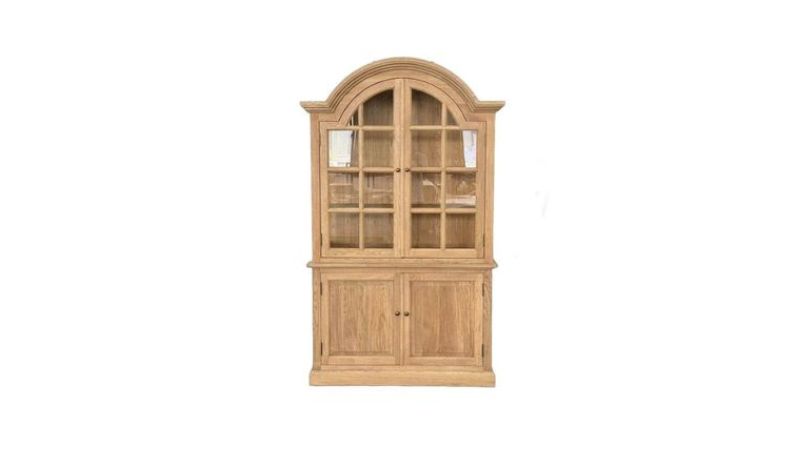
- Simple definition: A glass cabinet with glazed doors used to display porcelain, glassware, or collectibles.
- Characteristics: Glass-fronted doors, interior shelving, sometimes mirrored backs and decorative cornices.
- Typical era/region: 18th–20th century, widely made in Europe and the U.S.
- Use: Decorative display and protection of fragile items.
- Historical Story: The china cabinet was born from a European obsession with porcelain. In the 18th century, the secret of making true, translucent porcelain (previously only imported at great expense from China) was discovered in Meissen, Germany. Suddenly, owning exquisite, locally-made porcelain became the ultimate status symbol. Families needed a way to showcase their expensive new tableware, leading to the creation of the glazed cabinet. It was a clear statement: “We own these fragile, luxurious items, and we have the wealth and refinement to use them.”
Linen or Blanket Cupboard
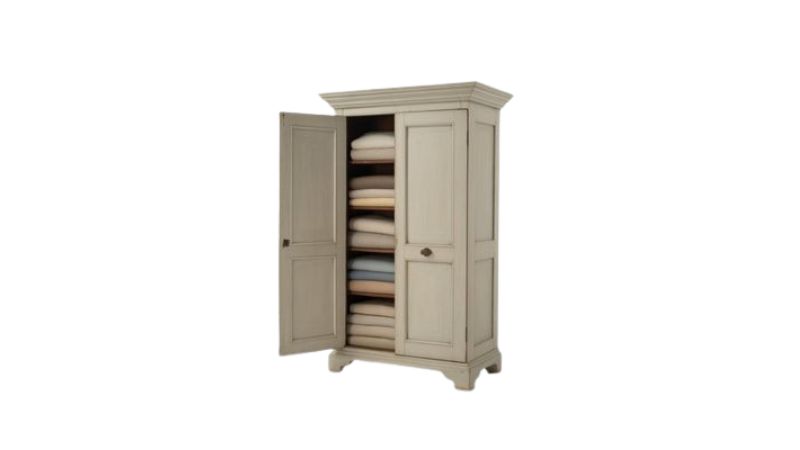
- Simple definition: A simple cabinet with shelves behind doors for household textiles or dry goods.
- Characteristics: Plainer construction, often painted or with simple paneled doors; early country examples are rustic.
- Typical era/region: Common in the 17th–19th century rural Europe and colonial America.
- Use: Linens, blankets, pantry storage.
- Historical Story: In colonial New England, a young woman’s social standing and preparedness for marriage were measured by her “hope chest” or “dowry chest,” which evolved into a linen press or cupboard. From a young age, she would weave, stitch, and carefully stockpile her household linens—sheets, tablecloths, napkins, and towels. The linen cupboard, often passed down through generations, was more than storage; it was a symbol of her industry, virtue, and the foundation of her future household.
Book Cabinet
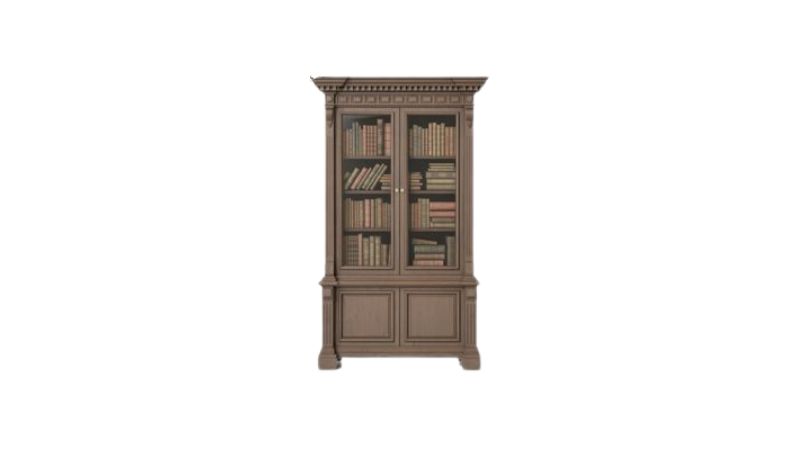
- Simple definition: Shelved cabinet for holding books; can be open-front or glass-fronted.
- Characteristics: Adjustable shelves, often with carved cornices, sometimes stackable or fitted with glazed doors for protection.
- Typical era/region: Popular throughout the 18th–19th centuries in Europe and America.
- Use: Book storage and display.
- Historical Story: Before the mass production of books, a private library was an almost unimaginable luxury. Early bookcases, like those in Oxford’s Bodleian Library, often chained books to the shelves to prevent theft. By the 18th century, as literacy rose and publishing grew, the gentleman’s library at home became a mark of intellectual status. The design of the book cabinet evolved with a specific purpose: to display the owner’s erudition. Glass doors were added not just for protection, but to create a “cabinet of curiosities” where the bound knowledge itself was the treasure on display.
Corner Cabinet
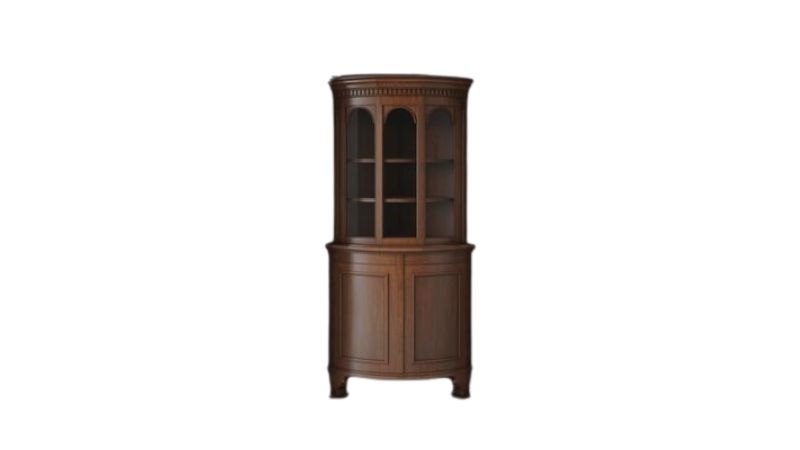
- Simple definition: A cabinet shaped to fit into a room corner, typically with one or two doors and shelving.
- Characteristics: Triangular or bow-front form, often glazed upper doors and solid lower doors; decorative veneers and inlay are common.
- Typical era/region: 18th–19th century English and American furniture.
- Use: Space-efficient display or storage.
- Historical Story: The corner cabinet is a brilliant product of 18th-century Georgian interior design, which emphasized symmetry, proportion, and the efficient use of space. In the formal, often rectangular rooms of townhouses, corners were dead space. Cabinetmakers saw an opportunity to create a piece that solved this problem elegantly. A beautifully crafted corner cabinet, often filled with a collection of Chinese export porcelain or decorative punch bowls, turned an awkward void into a focal point of refinement and clever design, proving that no space should be wasted on beauty.
Chest on Chest (Tallboy)
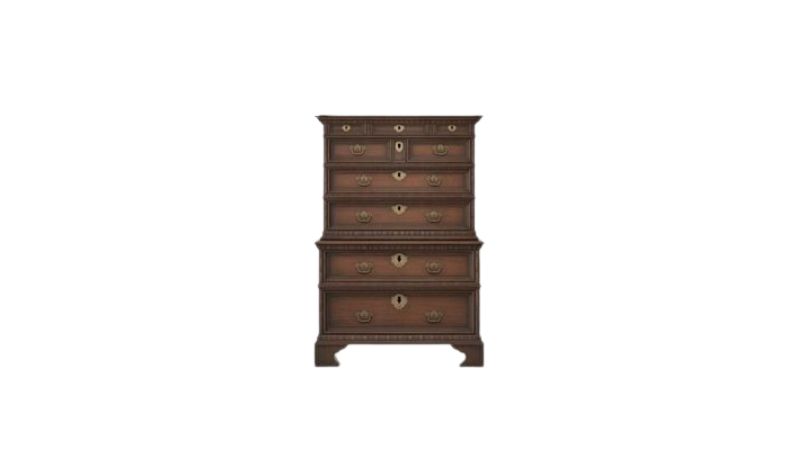
- Simple definition: A tall stacking form where a chest of drawers sits atop another chest (tallboy is similar, often a single tall chest).
- Characteristics: Multiple drawers for clothing, bracket feet or cabriole legs, often ornate drawer fronts and brass hardware.
- Typical era/region: 17th–18th century Britain and colonial America.
- Use: Clothing and personal storage.
- Historical Story: The tallboy, or “chest on chest,” was a direct response to a tax. In the late 17th century, William III introduced a tax based on the number of windows in a house. Homeowners bricked up windows to save money, making interiors darker. At the same time, a new fashion for fuller, more elaborate clothing created a storage crisis. The solution was to build upwards instead of outwards. The tallboy provided maximum storage capacity while occupying the same small floor space, a clever and stylish workaround to the economic constraints of the day.
Glazed Apothecary
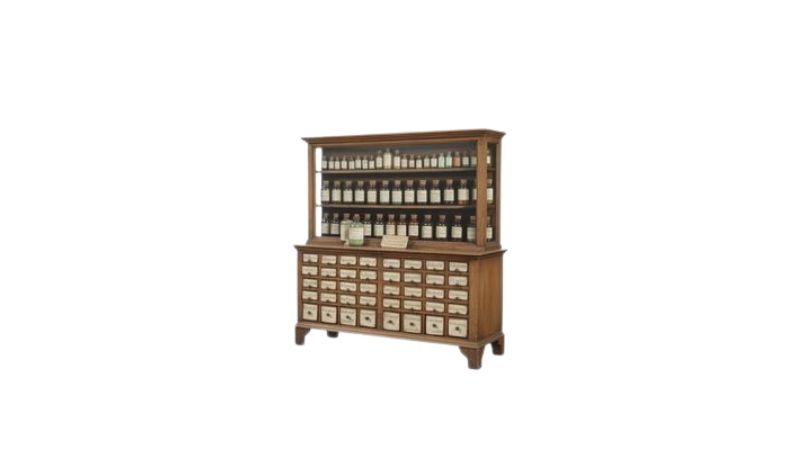
- Simple definition: A cabinet with many small drawers and sometimes glazed sections used historically in pharmacies.
- Characteristics: Numerous labelled drawers, shallow depths, oak or walnut construction; may have a glass-fronted top for jars.
- Typical era/region: 18th–19th century Europe.
- Use: Storing medicines, spices, small tools or samples.
- Historical Story: The apothecary cabinet was the database of early medicine. Each meticulously labelled drawer held a specific dried herb, mineral, compound, or potent ingredient like mercury or opium. The organization was a matter of life and death. Apothecaries often developed a secretive shorthand or personal system for their labels to protect their recipes. The glazed upper section would display showy, colorful jars of tinctures and liquids to attract customers. Today, these cabinets are coveted for their incredible utility, but they once stood as the fascinating, and often frightening, frontier of medical science.
Hall Cabinet
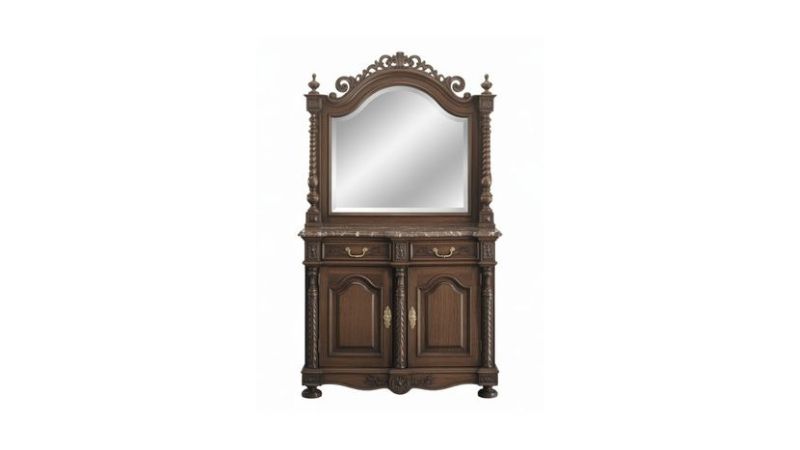
- Simple definition: A narrow cabinet or table-like cabinet placed against a wall in an entry or hall.
- Characteristics: Slim profile, sometimes with doors or drawers, often topped with marble or decorative inlay and supported by legs rather than a full base.
- Typical era/region: 18th–19th century Europe.
- Use: Entryway storage, keys, gloves, mail; decorative surface.
- Historical Story: In Victorian England, the hall cabinet was the stage for the highly codified ritual of “calling.” When a visitor arrived, a servant would collect their calling card on a silver tray, often placed atop the hall cabinet. The lady of the house would then review the cards received that day and use the cabinet’s drawers to store her own, deciding who was worthy of a returned call. The cabinet, therefore, was the first and last impression for guests, a piece of furniture that managed social networks and served as a silent gatekeeper to the home’s private world.
Conclusion
Whether you’re hunting for a showpiece to anchor a room, researching a family heirloom, or learning how to care for a treasured find, understanding different types of antique cabinets gives you the vocabulary and eye to appreciate their value—practical and aesthetic. Each furniture piece, defined by its material, joinery, and unique features, carries clues about its past. From the elegance of a china cabinet to the charm of a corner cabinet, there is a variety of styles to explore. While their popularity originated in past centuries, their natural beauty and timeless design make them an ideal fit for both traditional and modern homes, allowing you to preserve and celebrate these beautiful survivors of a craft-focused past.

